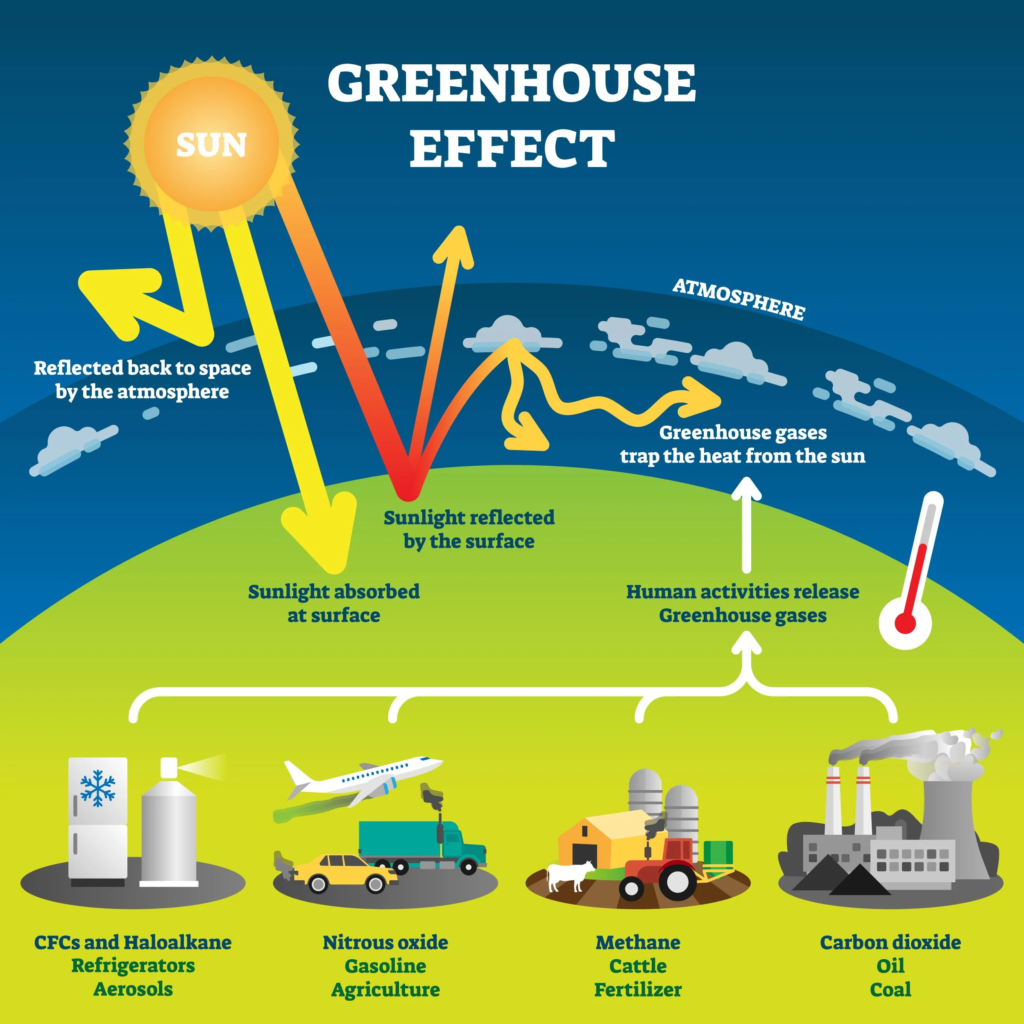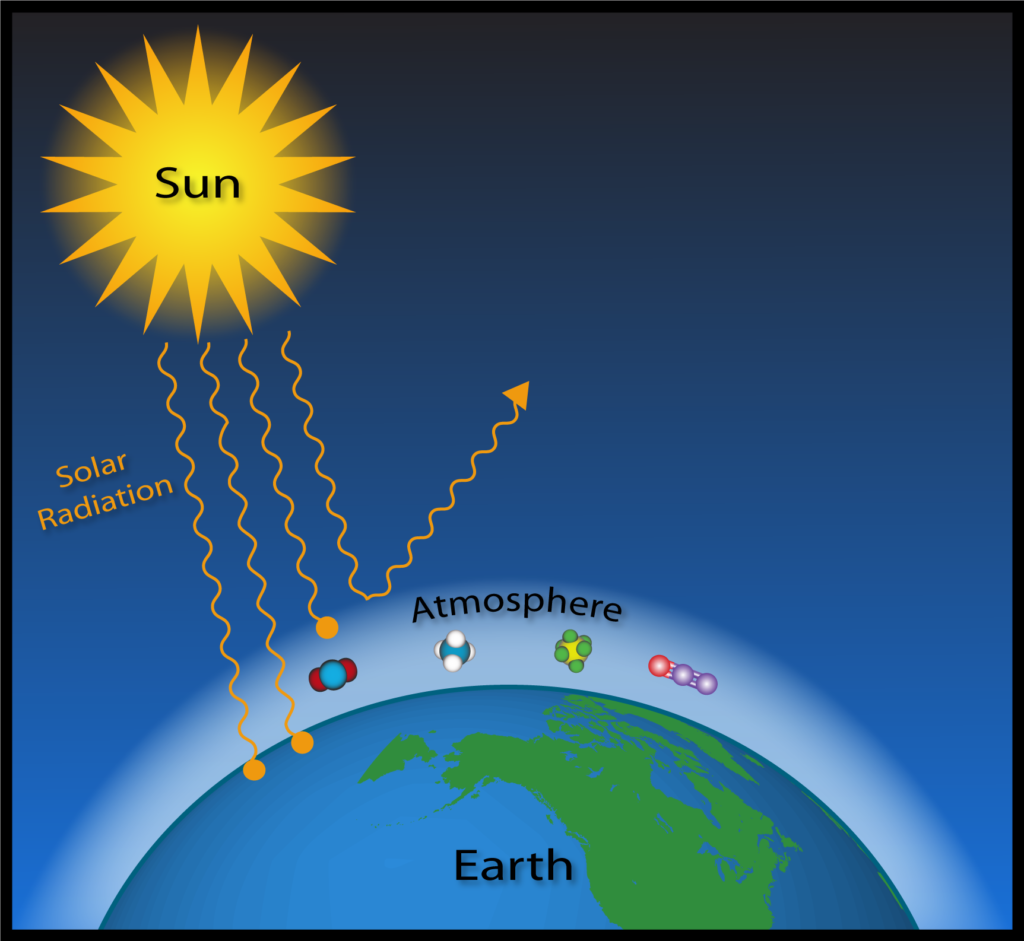U.S. emissions and global greenhouse gas effect have become central to global climate discussions. The United States, as one of the largest historical contributors to greenhouse gas emissions, has a responsibility to reduce its carbon footprint and meet international climate goals. Decisions made in Washington about energy, industry, and environmental policy have global consequences, making U.S. actions critical to limiting the impacts of climate change.
The Scale of U.S. Emissions
The United States has long been one of the biggest sources of greenhouse gases. While China currently emits more on an annual basis, the U.S. remains the second-largest emitter and the top contributor historically. This long legacy has given the U.S. an outsized role in driving global warming.
Emissions in the U.S. mainly come from several sources. The energy sector, heavily reliant on coal, oil, and natural gas, produces a large portion of carbon dioxide. Transportation, including cars, trucks, airplanes, and ships, contributes nearly one-third of total national emissions. Industrial sectors like cement, steel, and chemicals add both carbon dioxide and methane, while agriculture contributes methane from livestock and nitrous oxide from fertilizer use. Together, these sectors create a carbon footprint that affects not only Americans but also people worldwide.

The Global Greenhouse Gas Effect
The greenhouse gas effect is a natural process that keeps Earth warm enough to sustain life. Gases like carbon dioxide, methane, and nitrous oxide trap heat in the atmosphere. However, human activities, particularly since the Industrial Revolution, have caused these gases to accumulate in far greater concentrations than before.
The global greenhouse gas effect is not confined by national borders. A ton of carbon dioxide released in Texas has the same impact as one released in Brazil or India. This means U.S. emissions add to a shared global problem, driving rising temperatures, more extreme weather, melting ice caps, and sea-level rise. The United States cannot view its emissions in isolation; its actions shape climate outcomes worldwide.
International Climate Commitments
The U.S. has had a complicated relationship with global climate agreements. In 1997, the country signed the Kyoto Protocol but never ratified it, citing concerns about economic impact and the lack of obligations for developing countries. Nearly two decades later, the Paris Agreement of 2015 marked a turning point. The U.S. pledged to cut emissions by 26 to 28 percent below 2005 levels by 2025.
This commitment faced setbacks when the country briefly withdrew from the Paris Agreement in 2020. However, in 2021 the U.S. rejoined and raised its ambition, pledging to cut emissions by 50 to 52 percent below 2005 levels by 2030. It also set a long-term target of achieving net-zero emissions by 2050. These commitments place the U.S. in line with other leading economies working to avoid the worst impacts of climate change.
Federal Policies Driving Change
Recent years have seen significant legislation and policy initiatives to curb U.S. emissions.
The Inflation Reduction Act
Passed in 2022, this law represents the largest climate investment in U.S. history. It provides tax credits for renewable energy projects, electric vehicles, and domestic manufacturing of clean technologies. By promoting wind, solar, and battery production, it aims to accelerate the shift to a cleaner economy.
Methane Reduction
Methane is more potent than carbon dioxide in the short term, and the U.S. has pledged to cut methane emissions significantly. Federal rules now target leaks from oil and gas operations, one of the largest sources of methane pollution.
State-Level Leadership
While federal action is vital, many states have also stepped up with ambitious climate goals. California leads with strict vehicle emissions standards and a mandate for 100 percent clean electricity by 2045. States like New York and Massachusetts have also adopted aggressive renewable energy plans, showing how subnational governments can drive progress even when federal policies face obstacles.
Investment in Clean Technology
The U.S. is investing in advanced solutions such as carbon capture, hydrogen fuel, and small modular nuclear reactors. These technologies, still in development, could play a major role in reducing emissions from hard-to-abate sectors like heavy industry.
Progress and Remaining Challenges
The U.S. has made progress but faces steep challenges in meeting its climate goals.
Positive Developments
Coal use has declined significantly over the past decade, replaced by natural gas and renewable energy. Wind and solar now generate more than one-fifth of U.S. electricity, and that share continues to grow. Electric vehicle adoption is also expanding, supported by incentives and a rapidly growing charging network.
Ongoing Obstacles
Transportation remains the largest source of emissions, with slow progress in electrifying heavy trucks, aviation, and shipping. Political divisions also create uncertainty, as climate policies often change with different administrations. Fossil fuel industries maintain strong influence, especially in oil- and gas-producing states. In addition, the U.S. faces the direct impacts of climate change, from hurricanes and wildfires to droughts, which test its capacity to adapt while cutting emissions.
The Global Role of the United States
Beyond domestic policy, the U.S. influences global climate efforts.
Technology Sharing
By leading in clean energy innovation, the U.S. can help other countries reduce their emissions. Exporting renewable energy technologies, electric vehicles, and grid solutions can amplify the global impact of American innovation.
Climate Finance
Under the Paris Agreement, developed nations committed to providing $100 billion annually to support climate efforts in developing countries. While the U.S. has increased its contributions, critics argue it has not yet met its fair share. Expanding climate finance is critical for building trust and ensuring that poorer nations can invest in clean development.
Diplomacy and Partnerships
The U.S. works closely with allies like the European Union, Canada, and Japan on climate policy. It has also engaged in dialogues with China, the world’s largest emitter, recognizing that global cooperation is essential despite broader geopolitical tensions.

Looking Toward Net Zero by 2050
The goal of net-zero emissions by 2050 is ambitious and requires structural transformation across the U.S. economy. Achieving it will mean:
- Converting the power sector almost entirely to renewable and nuclear energy.
- Expanding electric vehicles and public transportation to replace fossil fuel use.
- Building a modernized grid capable of integrating renewable sources.
- Scaling carbon capture technologies and natural solutions like reforestation.
- Supporting communities dependent on fossil fuel industries through a just transition.
Meeting these targets will require not only technology and investment but also political stability and public support.
Conclusion
U.S. emissions and global greenhouse gas effect remain at the heart of international climate challenges. As one of the largest emitters, both historically and currently, the United States has a responsibility to lead by example. Federal initiatives, state leadership, and investment in clean technology show progress, but the path to meeting international commitments is still difficult.
The choices the U.S. makes in the coming decade will determine whether it can meet its 2030 and 2050 goals. More importantly, these choices will shape global efforts to combat climate change. The world is watching closely, and America’s role in reducing emissions will influence not only its future but the future of the planet.
Do Follow USA Glory On Instagram
Read Next – U.S. Space Policy: Commerce, Security, and Exploration






